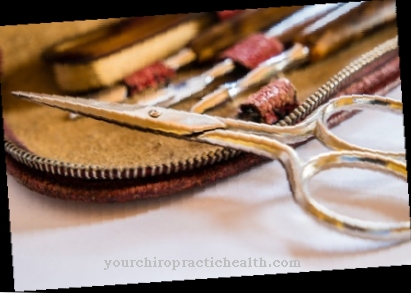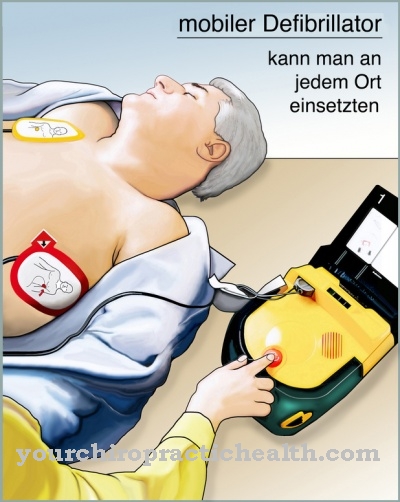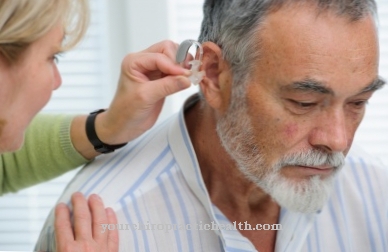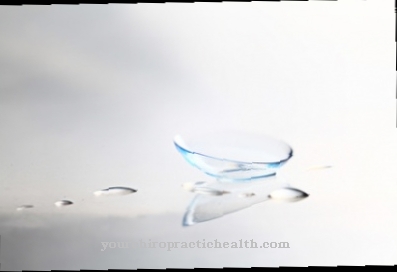A Cardiac catheter is placed to examine the heart and coronary arteries. The catheter is used to diagnose pathological changes in the heart valves, the heart muscle or the coronary arteries.
What is a cardiac catheter?

A cardiac catheter is a thin and flexible plastic tube. A distinction can be made between right heart catheter (small heart catheter) and left heart catheter (large catheter). An X-ray contrast agent is injected into the catheter so that the vessels and structures of the heart become visible.
The investigation also carries risks. This can lead to cardiac arrhythmias, strokes or injuries to blood vessels.
Shapes, types & types
Basically there are two types of catheter. With a left heart catheter, pathological changes in the heart valves, the heart muscle and the coronary arteries of the left heart are diagnosed. The left heart chamber and the left atrium can be examined with the left heart catheter. The puncture site is usually in the groin for this examination. The heart is accessed through an artery.
The right heart catheter examination measures the pumping capacity of the heart and the pressure in the pulmonary arteries. In contrast to the left heart catheter, a right heart catheter does not usually use an X-ray contrast medium. Access is through the veins. The puncture site is usually in the crook of the arm, in rarer cases in the crook of the groin.
The right heart catheter is often performed in connection with an exercise test. In the lying position, the patient steps on bicycle pedals. Meanwhile, the values are measured with the catheter. These can then be compared with the rest values. With this difference in values, a good overview of the cardiac output can be obtained.
Structure & functionality
The primary goal of a cardiac catheter examination is to guide the catheter into different parts of the heart in order to be able to take pressure measurements there or to make certain structures visible.
First, the puncture site is anesthetized locally so that the patient does not feel any pain. Sedatives can also be given if necessary. Anesthesia is usually not necessary. Then a lock is placed in the blood vessel using the Seldinger technique. This serves as a guide and as a seal for the puncture site. A guide wire is then pushed through the splint into the target area. An X-ray machine is used to check the optimal position of the wire. The catheter is then inserted along this wire. If the catheter is properly seated, the wire is also removed. If necessary, the position of the cardiac catheter can be corrected under fluoroscopy with X-rays.
With the right heart catheter, the pressure is now measured in different areas of the heart. An X-ray contrast medium must be administered to the patient in order to be able to assess the heart's action and visualize the heart vessels. If it is necessary to change the position of the catheter, a guide wire is used again. This can easily be introduced through the lock.
After the examination, the cardiac catheter, guide wire and sheath are removed again. The puncture site is tightly closed with a vascular closure system or with a pressure bandage.
Medical & health benefits
Many examinations of the cardiovascular system are possible with the cardiac catheter. In general, the blood flow in the heart can be displayed with the X-ray contrast medium. The pressure, the oxygen content and the temperature in the vessels can also be recorded. In the case of cardiac arrhythmias and disorders of the conduction of excitation, the catheter examination provides information about the electrical activities of the heart muscles.
The right catheter primarily measures pressure, oxygen and temperature in the right heart. Left heart catheters allow oxygen and pressure to be measured in the aorta and in the left ventricle of the heart. The left ventricle and the coronary arteries can be made visible with a contrast medium.
Many other treatments can only be carried out together with a cardiac catheter. If the coronary arteries narrow, it can lead to a heart attack.In order to widen the narrowed or closed vessels again, balloon dilatation is usually performed. A balloon catheter is inserted into the blood vessels. There is a balloon at the end of the balloon catheter. This balloon is unfolded in the narrowing of the blood vessels, thereby expanding the vessel so that the blood can flow more easily again.
If the desired result is not achieved by expanding the balloon catheter, a stent can be implanted. A stent is a small tube made of metal mesh. This tube is folded up and placed on a balloon catheter. The cardiac catheter with the stent is then pushed into the constriction in the vessel and expanded there. The stent remains in the affected vessel.
Open operations for congenital heart defects can now be avoided with the cardiac catheter. Diseases such as atrial septum defects, ventricular septal defects or valve stenosis can be removed with the cardiac catheter directly during the examination. Heart valves can also be implanted using cardiac catheters. Arousal disorders can also be treated with a cardiac catheter. In the process, disturbing tissue is obliterated.
However, cardiac catheterization is not risk-free. Often there is secondary bleeding in the area of the puncture site. Vascular abnormalities at the puncture site are also observed.
If contrast media are used during the examination, allergic reactions can occur. In addition, the contrast agent administered is harmful to the kidneys and is only recommended to a limited extent in the case of impaired kidney performance. In patients with an overactive thyroid, the iodine-containing contrast agent can also lead to a life-threatening thyrotoxic crisis.

























.jpg)


